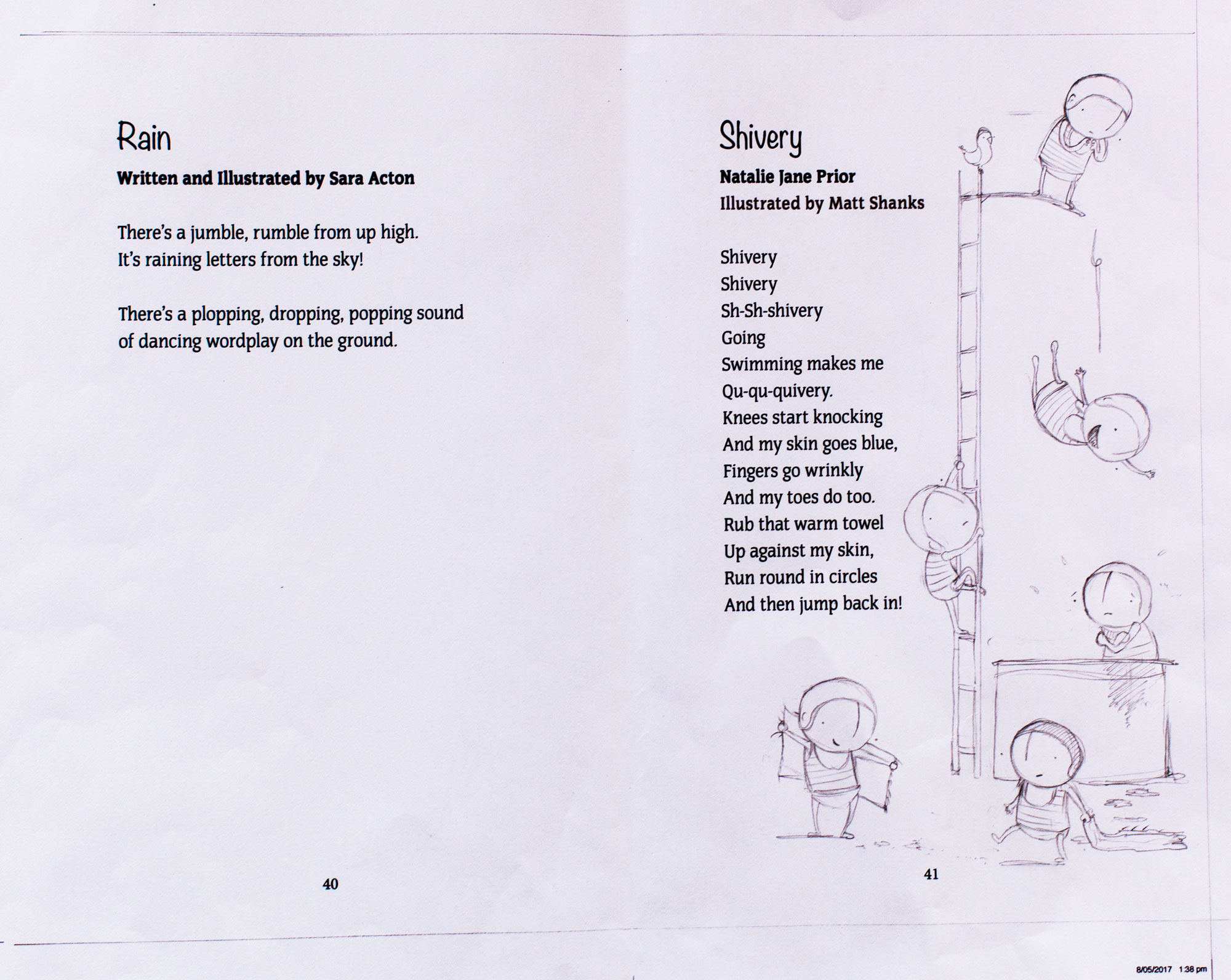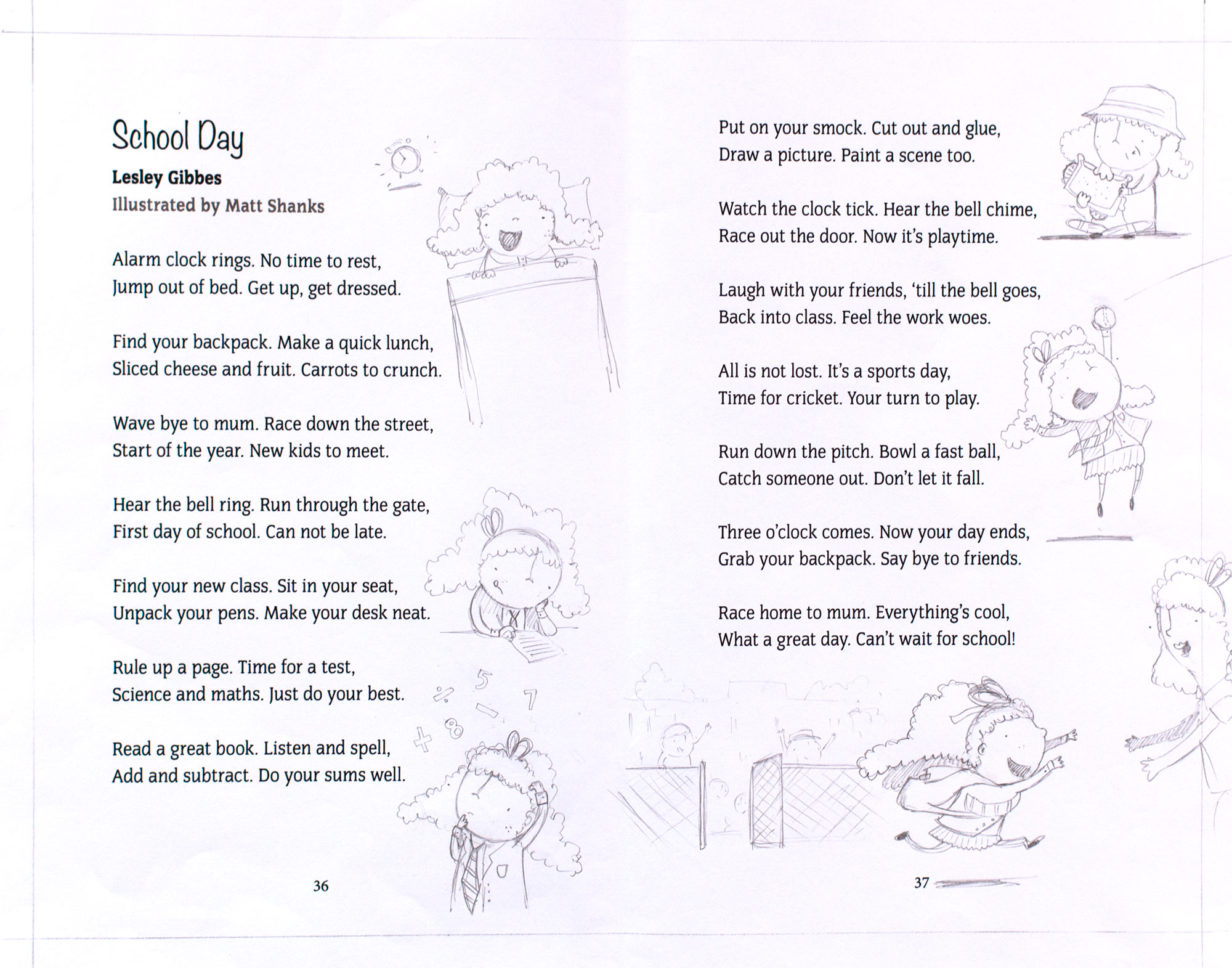I recently met Julie Vivas at an event for a new collaboration I was part of, A Boat of Stars. I extended my shaking hand and was like, “OMG, I’m touching Julie Vivas!” Of course, I didn’t yell this at her but that’s what was going on in my brain. And so, remaining as cool as a cucumber on the outside, I introduced myself. Then, she said to me, “Matt, you have such movement in your work.”
And, in just those few words, she opened up a whole lotta internal questions about how I got to where I am, and my style.
Where did movement come from?
I’ve never thought about this, not one bit. At first, I didn’t even know what she meant. She pointed toward my illustration of “Shivery” in A Boat of Stars, and only then did I cotton on to her point. It got me wondering, I’ve never tried to get movement into my work. But there it was. So how could this be if it wasn’t intentional? So at the risk of reverse-engineering a completely false story, here goes.

From about the age of 8, my parents filled every waking hour outside of school with Sport. I played golf, cricket, soccer and even dabbled in little athletics and tennis. Sport has been an integral part of my identity for years. Even today, whilst I rarely play anymore, I watch and support sporting teams in various codes.
So here’s what I think happened, growing up around sport meant that the body and its movements were seeping into my brain. They had to be, for sport’s sake at least. If I was going to tackle an oncoming player, I needed to anticipate which way the player was going to run? Where would the ball end up as it sailed out of the bowler’s hand and toward me at the other end with a bat in hand? All this is achieved intuitively by assessing the other player’s weight, body angles, speed, and direction of travel.
It’s not like I tried to consciously remember all the ways a body can move. I wasn’t sitting on the edge of a field documenting the impact of momentum and physics on our feeble squishy human frames. But, if we truly are a product of our experiences, my knowledge and interest in biomechanics must have come from somewhere, and this is the only reason I can find.
When I was in high school, my life in Sport almost influenced my decision to head down a path of a career in sports science. Biomechanics was really interesting to me; the fact that you could optimise tiny physical movements to produce greater efficiency was astounding, and it made total intuitive sense (this was despite my teacher at the time making fun of biomechanics as ‘nerdy’ and actively discouraging me away from it). But I was serious, I also had physiotherapy down as one of my preferences for university courses when I left school. It was only at the last minute that my curiosity around animation (which, as it turns out, is also the study of physics and movement) got the better of me, and I left high-school for a degree in Design Computing at the University of Sydney.

Fast forward to 15 years later, and now I only watch sport instead of playing it but here I am telling a story about that time when Julie Vivas said, “Your work has a lot of movement”. I don’t even remember what I said in response! Probably something bumbling and stupid like, “Thank you, I loved Possum Magic. You’re the best!” But now, it seems obvious. I’ve lived a life where I’ve witnessed people in motion for 30 or so years. In the end, movement in my work? Well, it just makes sense.
